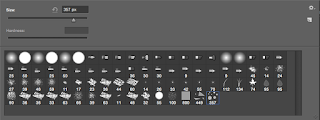PROJECT PLOT
This new project I'm starting called,"Lost in The City" is about a man who lives downtown of a city. The project begins with him (I'm going to call this man Luke) leaving his apartment to find something to do because he is bored. As he is walking down the street, Luke sees all of these people happily living their lives on the street with others like a biker, some cars, jump roping kids, a tired business man, and a mother and daughter walking together.
When he sees the tired businessman, Luke starts to relate to his sadness for having to do the same boring tasks over and over and not enjoying it. This motivates him to find some activity that will satisfy his need to relax. As he gets to the end of the street, Luke finds someone spray painting a concrete wall. Luke then stops wondering why this man would do graffiti in a public place like this. The artist then responds by saying that he is making a mark in this city because he wants to be self employed, not employed to someone, and that people should spend their time fulfilling their own dreams, not the dreams of others. The artist says that he shows this philosophy through graffiti so others can see his own creations that don't contribute to one single person, but for everyone.
Luke is then inspired to help the artist to create a graffiti mural for all to see. They add abstract images of their imagination. Eventually, some of the neighbors join in the fun and make their own ideas come to life. Now the whole street is full of joy and brightness, and begins to glow from its environment.
MAKING OF THE PROJECT
 |
| City Street Sketch |
From my city street sketch above, you can see the buildings that were made. The whole buildings won't be shown for the project due to the camera, but the buildings play a vital role in filling the space where Luke will stroll down. Some of the buildings like the apartments to the right will be duplicated, along with windows, trash cans, and light posts in the street. The reason why the blue border is on the image is because I had to scale down my two images when cropping them together to make them aligned.
That is my plan for this project so far. I will eventually write more about this as I work on it, so stay tuned for more updates on Lost in The City!














